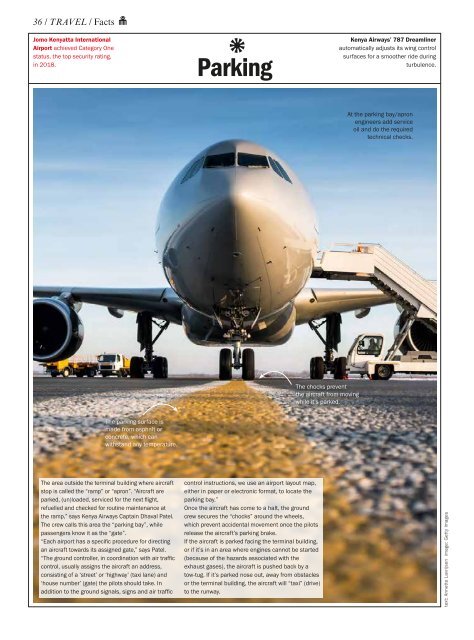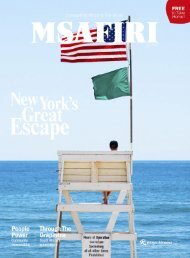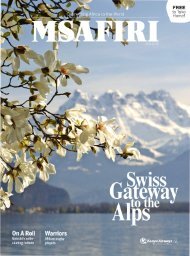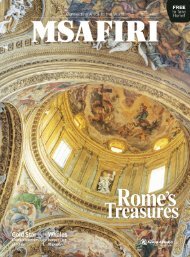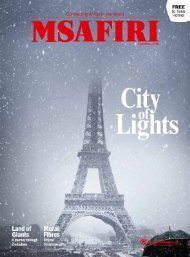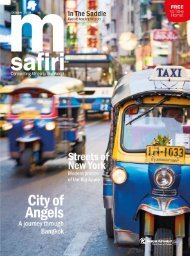january-2019
January Issue
January Issue
Create successful ePaper yourself
Turn your PDF publications into a flip-book with our unique Google optimized e-Paper software.
36 / TRAVEL / Facts<br />
Jomo Kenyatta International<br />
Airport achieved Category One<br />
status, the top security rating,<br />
in 2018.<br />
Parking<br />
Kenya Airways’ 787 Dreamliner<br />
automatically adjusts its wing control<br />
surfaces for a smoother ride during<br />
turbulence.<br />
At the parking bay/apron<br />
engineers add service<br />
oil and do the required<br />
technical checks.<br />
The chocks prevent<br />
the aircraft from moving<br />
while it’s parked.<br />
The parking surface is<br />
made from asphalt or<br />
concrete, which can<br />
withstand any temperature.<br />
The area outside the terminal building where aircraft<br />
stop is called the “ramp” or “apron”. “Aircraft are<br />
parked, (un)loaded, serviced for the next flight,<br />
refuelled and checked for routine maintenance at<br />
the ramp,” says Kenya Airways Captain Dhaval Patel.<br />
The crew calls this area the “parking bay”, while<br />
passengers know it as the “gate”.<br />
“Each airport has a specific procedure for directing<br />
an aircraft towards its assigned gate,” says Patel.<br />
“The ground controller, in coordination with air traffic<br />
control, usually assigns the aircraft an address,<br />
consisting of a ‘street’ or ‘highway’ (taxi lane) and<br />
‘house number’ (gate) the pilots should take. In<br />
addition to the ground signals, signs and air traffic<br />
control instructions, we use an airport layout map,<br />
either in paper or electronic format, to locate the<br />
parking bay.”<br />
Once the aircraft has come to a halt, the ground<br />
crew secures the “chocks” around the wheels,<br />
which prevent accidental movement once the pilots<br />
release the aircraft’s parking brake.<br />
If the aircraft is parked facing the terminal building,<br />
or if it’s in an area where engines cannot be started<br />
(because of the hazards associated with the<br />
exhaust gases), the aircraft is pushed back by a<br />
tow-tug. If it’s parked nose out, away from obstacles<br />
or the terminal building, the aircraft will “taxi” (drive)<br />
to the runway.<br />
text: Annette Lavrijsen image: Getty Images


